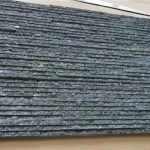Introduction:
Cultured stone houses have long been admired for their timeless beauty and durability. This type of construction material has gained popularity over the years for its ability to mimic the look of natural stone while offering a more affordable and versatile alternative. In this article, we will delve into the history, benefits, and design aspects of cultured stone houses, highlighting why they continue to be a popular choice for homeowners and builders alike.
History of Cultured Stone:
The concept of using cultured stone as a building material dates back to the mid-20th century when manufacturers began developing techniques to create lightweight and durable stone veneers. Initially, cultured stone was primarily used for commercial buildings and exterior cladding due to its cost-effectiveness and ease of installation compared to natural stone.
As the technology and manufacturing processes evolved, cultured stone became more widely available for residential applications. stepping stones for sale started to appreciate the aesthetic appeal and versatility of cultured stone, leading to its increased use in constructing entire houses or as decorative accents on existing structures.
Benefits of Cultured Stone Houses:
There are numerous advantages to choosing cultured stone for your home's exterior or interior. Some of the key benefits include:
1. Cost-Effective: Cultured stone is generally more affordable than natural stone, making it a budget-friendly option for homeowners looking to achieve the look of stone without breaking the bank.

2. Lightweight: Cultured stone is significantly lighter than natural stone, which makes it easier to handle and install. This can result in lower labor costs and faster construction times.
3. Variety of Styles and Colors: Cultured stone is available in a wide range of styles, colors, and textures, allowing homeowners to customize their home's appearance to suit their preferences and architectural style.
4. Durability: Cultured stone is engineered to withstand harsh weather conditions, including extreme temperatures, moisture, and UV exposure. It is also resistant to chipping, cracking, and fading, ensuring a long-lasting and low-maintenance finish.
5. Eco-Friendly: Cultured stone is typically made from natural materials such as cement, aggregates, and iron oxide pigments. The manufacturing process produces minimal waste and consumes less energy compared to quarrying natural stone, making it a more sustainable choice for environmentally conscious homeowners.
Design Aspects of Cultured Stone Houses:
When incorporating cultured stone into the design of a house, there are several key factors to consider to ensure a cohesive and visually appealing result. Here are some design aspects to keep in mind:
1. Architectural Style: The style of the house will influence the type of cultured stone used and how it is applied. For example, a rustic farmhouse may benefit from a rough-hewn stone veneer, while a modern contemporary home could feature a sleek and uniform stone cladding.
2. Color Palette: Cultured stone comes in a variety of colors, ranging from earthy browns and grays to vibrant reds and blues. Selecting a color that complements the overall color scheme of the house and surrounding landscape is essential for achieving a harmonious look.
3. Texture and Pattern: The texture and pattern of the cultured stone can add depth and visual interest to the facade of the house. Mixing different textures or creating a unique pattern with the stone can create a dynamic and eye-catching design.
4. Integration with Other Materials: Cultured stone can be combined with other materials such as wood, metal, or stucco to create a multi-dimensional and visually striking exterior. Pay attention to how the different materials interact and complement each other to achieve a cohesive design.
5. Placement and Proportion: Consider the scale and proportion of the cultured stone elements in relation to the overall size of the house. Balancing the placement of stone accents with other architectural features can help create a cohesive and well-balanced facade.
Case Studies: Examples of Stunning Cultured Stone Houses
To further illustrate the versatility and beauty of cultured stone houses, let's explore a few case studies of exceptional homes that showcase the use of cultured stone in innovative and creative ways:
1. Modern Mountain Retreat:
Located in the picturesque mountains of Colorado, this modern mountain retreat combines sleek lines and contemporary design with the warmth and texture of cultured stone. The exterior of the house features a mix of charcoal gray and rust-colored stone cladding, creating a striking contrast against the surrounding landscape. Large expanses of glass windows provide panoramic views of the mountains, while the stone accents add a natural element that blends seamlessly with the environment.
2. Coastal Cottage Charm:
A charming coastal cottage in Maine exudes timeless elegance with its use of cultured stone accents. The facade of the house is clad in a soft gray stone veneer that mimics the look of weathered beach rocks, evoking a sense of coastal charm and tranquility. White cedar shingles and crisp white trim complement the stone perfectly, creating a classic and inviting exterior that is both durable and low-maintenance.
3. Tuscan-Inspired Villa:
Inspired by the rustic beauty of Tuscan villas, this sprawling estate in California showcases the versatility of cultured stone in creating an Old-World aesthetic. The exterior of the villa features a blend of warm golden stone cladding with intricate detailing and ornate corbels. The rich texture and color variations of the stone add depth and character to the facade, while the arched windows and terra cotta roof tiles complete the Mediterranean-inspired look.
Conclusion:
Cultured stone houses offer a perfect blend of aesthetic appeal, durability, and versatility, making them a popular choice for homeowners seeking to enhance the beauty and value of their homes. Whether used as a primary building material or as decorative accents, cultured stone can add character and charm to any architectural style. By considering the history, benefits, design aspects, and real-life examples of cultured stone houses, homeowners and builders can make informed decisions on incorporating this timeless material into their own projects.
